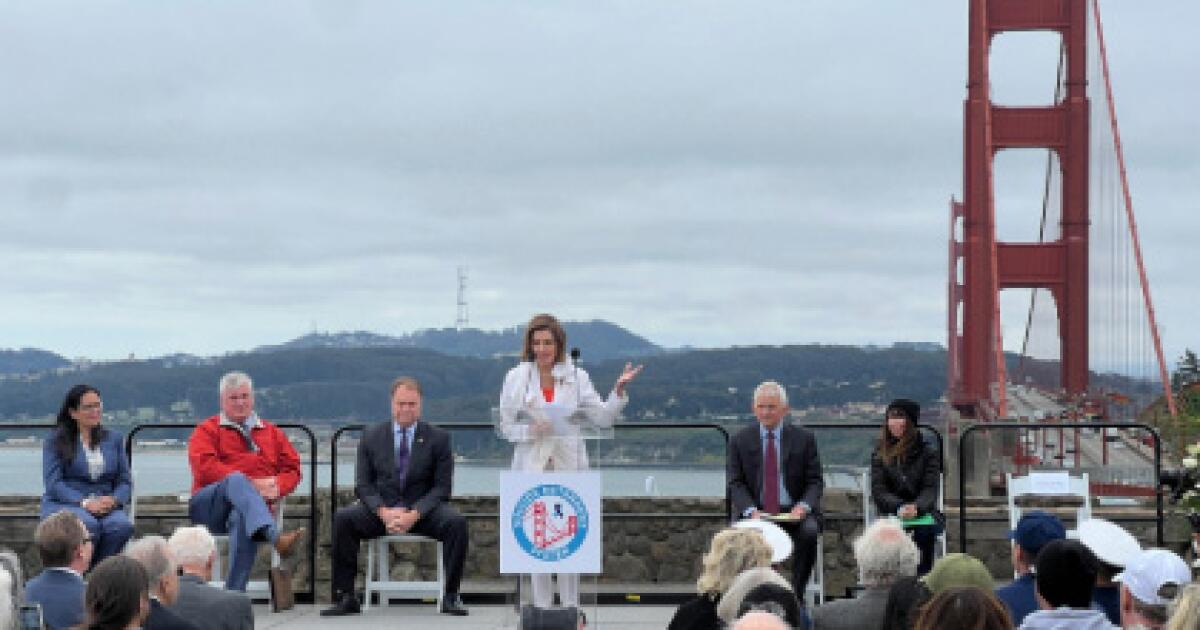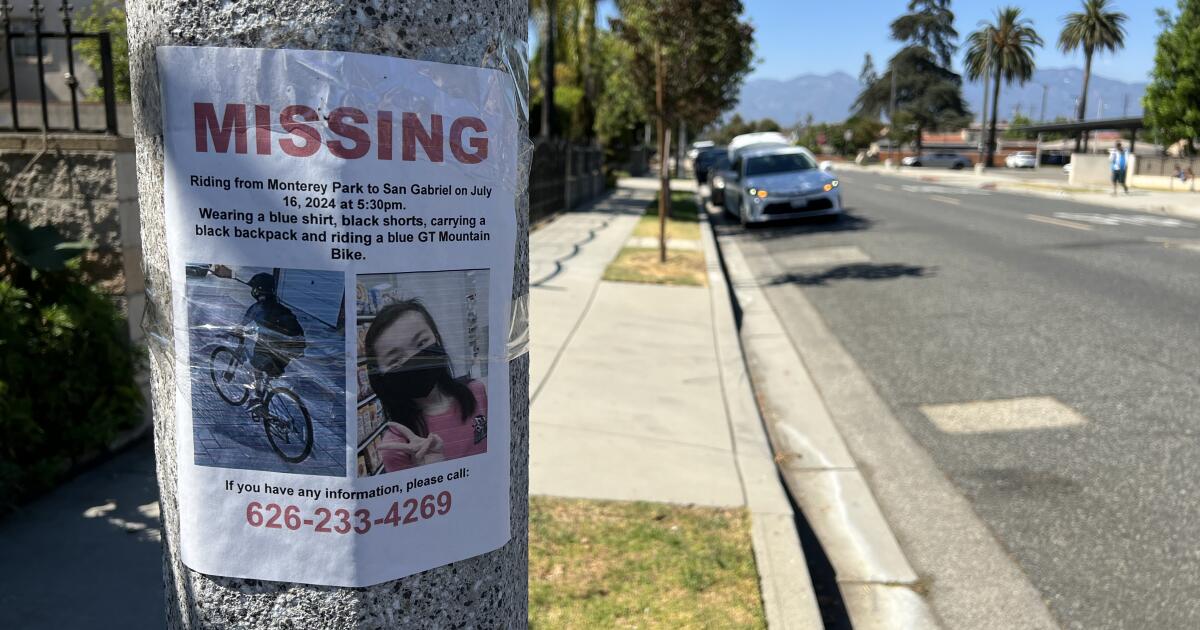World News
Why isn’t it easier to install a heat pump in California?

The nation’s electric utilities have voiced overwhelming support for reducing carbon emissions. Eighty percent of U.S. electricity customers are served by a utility with a 100% carbon-reduction target, according to the Smart Electric Power Alliance, and utility executives have touted their sustainability plans at the U.N. Climate Conference, Davos and beyond.
So why is it so hard to get help switching to a climate-friendly heat pump?
Marvels of modern engineering, heat pumps provide heating and cooling by transferring warm or cold air into or out of a home, eliminating the need to generate heat. They have been shown to substantially slash consumer heating costs and cut greenhouse gas emissions up to 50%.
Like so many other Americans who helped fuel a residential construction boom following the onset of the pandemic, I recently embarked on a wholesale remodel of my home in the Bay Area. Unlike most of my fellow remodelers, I make my living analyzing trends in customer experience with the nation’s electric, gas and water utilities. As an energy nerd, I saw the project as a chance to delve into the various incentives that the utilities have been promoting to facilitate my conversion from a gas-fired furnace to an electric heat pump.
What I found was a tangle of red tape, well-meaning but tragically ill-informed customer service representatives, and hours upon hours of filing forms, chasing down obscure information and questioning contractors — all in a quixotic quest to claim my local, state and federal rebates.
Heat pumps loom large as a component of electric utility sustainability initiatives. The Biden administration recently announced that $63 million in Inflation Reduction Act funding would be used to spur domestic manufacturing of heat pumps, and local, state and federal incentives have been deployed in most jurisdictions nationwide to encourage consumers to make the switch.
At the federal level, consumers are eligible for a tax credit that covers 30% of the cost of buying and installing a heat pump, up to a maximum of $2,000 per year. The TECH Clean California program offers incentives to contractors to install heat pumps, and the Los Angeles Department of Water & Power and other utilities offer rebates and other benefits. In Marin County, where I live, state, county and local incentives promised to bring the total rebate on my project to almost $5,000.
That prospect, along with the long-term value of increased efficiency, was enough to persuade me to take the plunge on a system that was a bit more expensive than a comparable gas furnace. Moreover, my extensive research on the subject was enough to overcome widespread misconceptions about the technology and its ability to comfortably heat and cool my home.
The good news is that my heat pump works wonderfully! It’s so good that I’ve started recommending one to my friends and neighbors. It isn’t loud or dry like traditional heat; it’s even and smooth. The system allowed much more flexibility in our construction and design. And, best of all, I now have central cooling for the first time.
Unfortunately, I’ve also put hours of work into chasing rebates I still haven’t received.
Ironically, the easiest part of the process was applying for a federal rebate through the Internal Revenue Service. When the IRS sets the benchmark for customer service, you know you have a problem.
Among the challenges I faced were an hour-plus conversation with a friendly Pacific Gas & Electric Co. representative who knew absolutely nothing about heat pump programs; an apologetic county official who informed me that I would need to fill out a commercial form even though my project was residential because “that’s the way the paperwork is written”; and even a request to provide detailed photos of my old gas furnace — the one that had already been removed — to prove I had made the switch.
Fortunately, because I was documenting the process partly for my own education, I had those photos and welcomed the opportunity to find all the hurdles consumers face. But will typical consumers — those who don’t spend their workdays analyzing the minutiae of utility customer experience — even bother to deal with this craziness? Probably not.
Perhaps that has something to do with the widespread customer apathy toward electric utility sustainability efforts. J.D. Power’s most recent study of this topic found that just 19% of customers were even aware of their utility’s carbon reduction initiatives.
We’re living in an era of amazing technological innovation, and we have public policies designed to catalyze consumer adoption of these breakthroughs. But if the same old bureaucratic hurdles stand in the way of access to those programs, no one wins.
There is a huge opportunity here for innovative utilities to take the lead on improving not only our policies but also the mechanisms that make them work. As a utilities industry professional, I’m optimistic that our leaders will take up this cause. As a consumer, I just hope I eventually get my rebate.
Andrew Heath is the vice president of utilities intelligence at J.D. Power.
World News
Newsom urges Oakland officials to tighten ‘extreme’ policy that restricts police chases

California Gov. Gavin Newsom, a Democrat, called on Oakland officials Friday to amend an “extreme” policy that generally only allows police to chase suspected criminals in cases of “violent forcible crimes.”
The governor sent a letter to Oakland Mayor Sheng Thao, the Oakland City Council and the Oakland Police Commission urging them to reconsider the Oakland Police Department (OPD) policy that limits officers’ ability to pursue suspects.
“Although some California jurisdictions allow vehicle pursuits for only certain crimes (e.g., felonies), Oakland is an outlier by imposing exceptional restrictions on OPD’s ability to police criminal activity, generally permitting pursuits only for ‘violent forcible crimes,’ as defined in OPD’s policy, and crimes involving firearms,” Newsom wrote.
The letter said that, unlike most other jurisdictions in the state, local police in Oakland are prohibited from pursuing people suspected of committing various felonies and any misdemeanor, including those that are violent, as well as other offenses that endanger public safety, such as reckless driving, sideshow activity and driving under the influence of drugs or alcohol.
GOV NEWSOM ORDERS HOMELESS ENCAMPMENTS TORN DOWN ACROSS CALIFORNIA: ‘NO MORE EXCUSES’

California Gov. Gavin Newsom speaks in Sacramento, California, Jan. 10, 2023. (AP Photo/José Luis Villegas, File)
“I am mindful of the sensitivities around vehicle pursuits, which can be dangerous to police, suspects, and innocent bystanders,” the governor wrote. “California’s Commission on Peace Officer Standards and Training recognizes and addresses this in its standard-setting guidance. But there is also extreme danger to the public in allowing criminals to act with impunity, and the reckless driving associated with sideshows and other criminal acts is a significant threat to public safety — as witnessed regularly by the public in viral videos and news coverage.”
This comes after Newsom’s recent move to increase California Highway Patrol (CHP) in Oakland to conduct surge operations targeting organized crime, sideshows, carjackings and other criminal activity.
Newsom said the move quickly produced several arrests of suspects accused of committing these crimes. Two days after the governor’s announcement, the CHP used ground and airborne assets to conduct a surge operation targeting sideshows. Several vehicle pursuits through that operation led to five felony arrests, eight DUIs, the recovery of eight stolen vehicles and the seizure of two guns.
“In the course of the CHP’s operations, however, they have observed, based on their professional law enforcement experience and expertise, certain dynamics that are contributing to Oakland’s public safety challenges,” Newsom wrote in the letter. “In particular, the CHP has brought to my attention that they observed criminals often fleeing with impunity because it’s common knowledge that the Oakland Police Department’s (‘OPD’) pursuit policy allows vehicle pursuits in only very limited circumstances.”
Newsom said CHP observed suspects attempting to avoid arrest by using the same routes, meaning that the suspects knew where OPD would stop chasing them. But, the governor said, the suspects were unable to avoid the six pursuits initiated by CHP, which had a number of resources available to them, including air support.

California Gov. Gavin Newsom speaks at a news conference in Sacramento, California, Thursday, March 16, 2023. (AP Photo/Rich Pedroncelli)
CLICK HERE TO GET THE FOX NEWS APP
“Any policy on vehicle pursuits must be clear-eyed in balancing the risks and benefits involved,” Newsom’s letter read. “Because of Oakland’s public safety challenges and the degree to which OPD’s pursuit policy is an outlier among California law enforcement agencies, I support the recent action by the City Council to direct a review of this policy.
“I urge you to reconsider whether OPD should be permitted to pursue suspects in more circumstances to improve public safety in your city and to establish a process to evaluate whether OPD is making full use of its authority, including that granted under the existing pursuit policy, to protect public safety and enforce the law,” he continued.
Newsom concluded his letter by saying he is committed to improving public safety in Oakland and across California. He said there have been some recent improvements in public safety, but that officials “owe it to our communities to continue to search for solutions.”
World News
France travel disruption expected to last for days

French rail company SNCF has warned that disruption from Friday’s sabotage against the country’s train network could last until the end of the weekend and affect hundreds of thousands more passengers.
Coordinated arson attacks on three lines of the high-speed TGV network on Friday caused chaos for travellers, hours before the opening ceremony for the Paris Olympics. A fourth attack was thwarted by rail workers.
Prime Minister Gabriel Attal described the attacks as “acts of sabotage”.
About a quarter of international Eurostar trains were also cancelled, with UK Prime Minister Keir Starmer among those affected.
In a statement issued on Friday evening, SNCF said traffic “would improve” on affected lines on Saturday thanks to the work of thousands of rail workers.
It said:
- On the eastern line, trains would run normally from 06:00 (05:00 BST) on Saturday
- On the northern line, 80% of trains would be running, with delays of 1-2 hours
- On the south-western line, 60% of trains would be running, with delays of 1-2 hours
The company added that customers whose trains are delayed or cancelled will be contacted by email or text message.
Eurostar said it expected about a fifth of services over the weekend would be cancelled, while all trains would face delays of around 1.5 hours. Eurostar services use the northern high-speed line.
SNCF said surveillance of the rail network had been strengthened “on land and in the air,” using 1,000 workers and 50 drones.
Junior Transport Minister Patrice Vergriete said around 250,000 people had been affected on Friday, while up to 800,000 could face delays and cancellations by Monday.
He added that disrupting holiday travel, rather than Friday’s Olympic opening ceremony, was the most likely aim of the saboteurs.
“There is not necessarily a link” with the Olympics, he said in an interview.
Friday 26 July traditionally marks the start of the grand départ (big getaway) for many French holidaymakers heading out of the cities.
No group has yet claimed that it was behind the attacks. A source linked to the investigation told the AFP news agency that the operation was “well prepared” and organised by “a single structure”.
Mr Attal said security forces were searching for those responsible.
At around 04:00 on Friday, saboteurs cut and set on fire specialised fibre optic cables essential for the safe functioning of the rail network, government officials said.
One site was at Courtalain, 150km (93 miles) south-west of Paris. A picture posted online purportedly showed burnt-out cables in a shallow gulley with its protective SNCF paving stones discarded.
The SNCF spoke of a “massive, large-scale attack aimed at paralysing” its services, not just at Courtalain but at Pagny-sur-Moselle, a village outside the eastern city of Metz and Croisilles, not far from the northern city of Arras.
Another attempted attack in Vergigny, south-east of Paris, was foiled by SNCF workers who were carrying out maintenance on site in the early hours of Friday.
Prosecutors have opened an investigation into attacks on “the fundamental interests of the nation”.
World News
‘Firenado’ spotted above explosive Park fire near Chico

As the state’s largest wildfire of the year was doubling in size Thursday evening, explosive flames spun up into the atmosphere, swirling in a way that can only be described as tornado-like — a real life example of the firenado phenomenon.
Video of the massive fire whirl was captured by AlertCalifornia wildfire cameras, displaying the extreme fire behavior that is driving the massive and fast-moving Park fire across Butte and Tahoma counties.
The blaze has grown past 178,000 acres as of Friday afternoon, forcing thousands of evacuations and burning more than 100 buildings. Officials say the fire started Wednesday in Chico due to an act of arson.
“At this point, the fire is kind of creating its own weather, and that can be pretty unpredictable,” said Courtney Carpenter, a meteorologist with the National Weather Service in Sacramento. “Really big, explosive wildfires can create thunderstorms. They can make whirling fire plumes that can mimic tornadoes.”
Meteorologists tracked those massive, rotating smoke plumes on the radar Thursday night, Carpenter said, a characteristic of “explosive fire growth.”
She said the wildfire also generated thunderstorm clouds, but didn’t quite trigger lightning, which some particularly unstable fires have created before.
Watching the fire produce massive smoke rotations — and maybe even several vorteces — showed off the blaze’s rare and powerful nature, said Daniel Swain, a climate scientist at UCLA, on his YouTube channel. He said the Park fire had “super-cell thunderstorm-like characteristics.”
There is growing recognition that extreme wildfires can produce other dangerous phenomena that are not directly related to the flames alone, Swain said.
It’s not unusual to see fires modify their environment by causing localized wind currents, but large fires such as the Park fire can even start to “generate their own Mesoscale weather systems that look a lot like severe thunderstorms,” he said.
He added that new research is also finding that climate change is increasing the magnitude and frequency of such behavior, as well as bringing it to new regions.
“There is evidence that these large and potentially dangerous pyro-cumulonimbus events are increasing in a warming climate as fire intensity increases,” he said.
Carpenter said the weather service doesn’t issue tornado warnings when fire whirls develop because residents in the area should already be evacuated. More than 4,000 people have been issued evacuation orders from communities in and around northeast Chico and in parts of southern Tehama County.
“We urge people to follow the local orders from local officials,” Carpenter said. “Keep an eye on things and be ready to go if you live in the vicinity of the fire.”
-

 African History5 years ago
African History5 years agoA Closer Look: Afro-Mexicans 🇲🇽
-

 African History6 months ago
African History6 months agoBlack History Facts I had to Learn on My Own pt.6 📜
-

 African History5 years ago
African History5 years agoA Closer Look: Afro-Mexicans 🇲🇽
-

 African History1 year ago
African History1 year agoMajor African Tribes taken away during the Atlantic Slave Trade🌍 #slavetrade #africanamericanhistory
-

 African History1 year ago
African History1 year agoCameroon 🇨🇲 World Cup History (1962-2022) #football #realmadrid #shorts
-

 African History6 months ago
African History6 months agoBlack History Inventors: Mary Kenner 🩸
-

 African History1 year ago
African History1 year agoNo African pre-Columbus DNA? 🤯🤯 #history #mesoamerica #mexico #african
-

 African History1 year ago
African History1 year agoOrigin Of ‘Cameroon’ 🇨🇲😳#africa






























